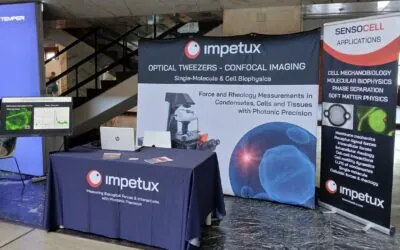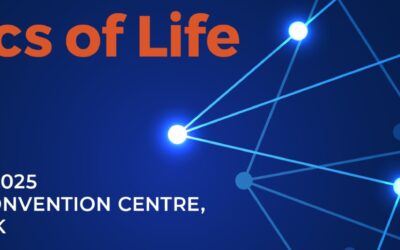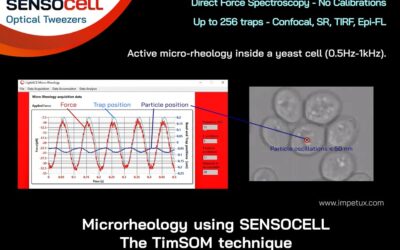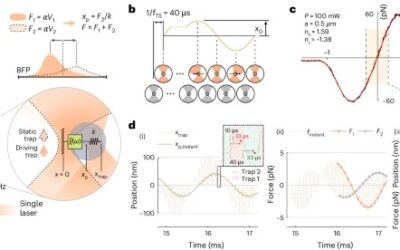News and events
Have a look at our latest news:
We are at EBSA 2025 in Rome!
We are at EBSA 2025 in Rome! We’re thrilled to be attending the 14th European Biophysics Congress (EBSA 2025), taking place this week in Rome from June 30th to July 4th. This major international event brings together the biophysics community to share cutting-edge...
See you at Physics of Life 2025 in Harrogate, UK
Impetux is heading to POL2025 – Physics of Life 2025! Harrogate, UK | March 24-27, 2025. Visit us at Booth 07
Webinar on Microrheology with SENSOCELL
On February 26, 2025, from 10:00 to 11:00 AM (CET), the Imaging and Optics Facility (IOF) will host a remote seminar on microrheology using our SENSOCELL optical trapping system
Innovative Optical Tweezers TimSOM Microrheology Discovers Novel Disease Indicators in Aging Animals
The TimSOM Microrheology technique has reported, in a Nature Nanotechnology article, three novel results in the field of mechanobiology
Recent Breakthroughs in Biophysics and Cellular Mechanics Research with SENSOCELL Optical Tweezers
These recent publications and its results obtained with the cutting-edge SENSOCELL optical tweezers by IMPETUX, mark significant advancements in the understanding of cellular mechanics, with implications for fields ranging from neurobiology to cancer research.
New available job position at IMPETUX
If you are passionate about technology, and want to join our team and contribute to create the latest generation of scientific instruments, have a look at this new job offer.
Here you will find our upcoming and past events
We are at EBSA 2025 in Rome!
We are at EBSA 2025 in Rome! We’re thrilled to be attending the 14th European Biophysics Congress (EBSA 2025), taking place this week in Rome from June 30th to July 4th. This major international event brings together the biophysics community to share cutting-edge research and foster collaboration. We’re proud to be part of it—showcasing our latest developments and connecting with researchers working at the frontier of molecular and cellular biophysics. If you’re attending EBSA 2025, come find...
See you at Physics of Life 2025 in Harrogate, UK
Impetux is heading to POL2025 – Physics of Life 2025! Harrogate, UK | March 24-27, 2025. Visit us at Booth 07
Would you like a DEMO?
Download SENSOCELL brochure






